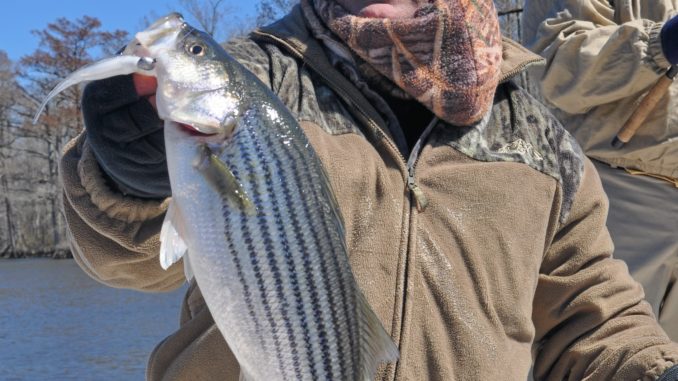
Follow these tips to catch more winter stripers
When February arrives, the line guides on fishing rods will fill with ice almost as quickly as an angler’s hands get cold.
Want a way to warm them or at least forget the chilly air? Try striped bass fishing in the Neuse and Trent rivers near New Bern.
“Everyone was worried about the stripers after (Hurricane Matthew) passed because they disappeared,” said guide Joe Ward of Flydaddy Charters (252-229-4656). “But they started showing up in late December. Some of them were nice, 30- to 35-inch fish.”
Some anglers have been catching 20 to 25 stripers per day around the pilings that support the bridges (US 70, US 17 and NC 55) across the Neuse and Trent in sight of downtown New Bern.
Ward, who said stripers, aka rockfish, will be holding in holes from 6 to 12 feet deep, predicted that good fishing will continue as long as the winter stays relatively mild.
Striped bass will spend time around the bridges and on the outer bends of river-channel curves in the Trent until the first of March, when hickory and American shad move upriver during their spawning run.
“That’s when the bigger rock get on the bridge supports; they use ‘em as ambush points,” Ward said. “But a lot of rock follow shad (upriver) to Pitchkettle Creek.”
Scott Wood, who regularly fishes the two rivers, likes to cast and retrieve a 7- or 9-inch wobblehead eel in shallow water.
“But it’s a hard bait to fish because the faster you wind, the shallower it goes,” Ward said. “It planes up, so you have to fish it slow to fish it right. But it will catch ’em when nothing else will.”
Stripers will sit on the upriver side of the bridge supports, and they’ll be deep in water that reaches 20- to 25-foot depths.
“It’s opposite what a lot of people believe,” he said. “I think they like to see what’s coming at them; they’re strong fish and aren’t bothered by current.”
With no live bait available, anglers rely on soft plastics, including 4-inch Bass Assassin and Zoom Flukes in white or smoky shad.
“The (paddletail) grubs work well, too, especially if you dip the tails in chartreuse dye,” said Ward, who eschews braid as a main line in favor of 5 or 6 feet of 30-pound fluorocarbon leader with a 1/8- to 3/8-ounce jighead.
“You got to (drop a lure) right beside the pilings, too. If you throw it 2 feet away, you won’t catch anything,” Ward said. “Keep in contact with the bait all the way to the bottom and 90 percent of the time, they’ll bite on the fall.”


Be the first to comment